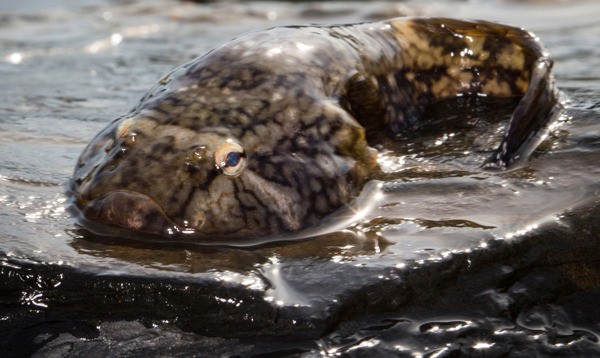By Heather Spaulding
Journal reporter
Northern clingfish don’t look like much at a glance: basic brownish coloring, dour mouth, typically growing no larger than a few inches, but it has an unbeatable knack for attachment.
The suction disc located on its belly is so powerful its attachment forces ranges between 150-250 times its body weight. To put that in perspective, humans are only one or two times their body weight.
The fact its suction disc is able to adhere so well to rough surfaces, or substrate, is part of what drew scientists’ attention. According to Friday Harbor Labs researcher Petra Ditsche, if their ability could be replicated, there could be countless benefits to technology. Surgeons, for example may be able to benefit from a device like this.
A tool that could stick to human organs without damaging them could literally be a life saver. There are potentially countless uses for a super strength suction disc.
A suction cup so powerful it could stick to the skin of marine mammals for an extended period of time, even during steep dives, could allow researchers to track say, an orca.
One major issue researchers have in trying to understand marine mammals has been only being able to observe a small fraction of their life without being invasive. For these scientists, a water proof, durable suction cup could be invaluable.
Once clingfish were analyzed under the microscope, it was possible to see why their disc was so effective. To aid with flexibility, the edge of the disc is made of hierarchical structures called papillae. Each papillae is lined with hair, or rods. This elaborate design helps the animal grasp on to the rocky substrate and prevents water from seeping underneath, ruining the suctions lower pressure.For the last two years Ditsche has been researching clingfish at the Friday Harbor Laboratories, University of Washington.
“I was impressed with their ability to stick to slippery surfaces, and their strength.” Ditsche said.
By looking at the way that nature uses certain processes, humans can glean information for their own uses as well.
“We look at nature, learn from nature and try to copy it. But biological systems are complicated, usually much more complicated than technical ones,” Ditsche said. “So the first step is we study the underlying mechanisms thoughtfully, but in the next step we usually have to simplify the design in order to make it technically doable. Usually nature is still better, but we can come closer. Nature’s solutions have often been proven over sometimes millions of years of evolution. Why not make use of that?”
To study one of these mechanisms, Ditsche and her research team molded sandpaper, the commercial kind from the hardware store, and they easily adhered to the surface. They then made rougher sandpaper by hand, gluing little pebbles to cardboard and making it steadily rougher.
“The cardboard was incredibly rough before they started having trouble,” Ditsche said. “Its really quite amazing.”
She began studying animal attachment in Germany, where she met Adam Summers, a professor from the Friday Harbor Laboratories. The two of them began to talk clingfish.
Approximately 110 species of clingfish can be found, including one in Hawaii that can climb waterfalls reaching 300 feet. The northern clingfish are fairly common in the intertidal areas of the Pacific Northwest.
Their favorite meal is limpets, according to “Attachment Challenging Substrates- Fouling, Roughness and Limits of Adhesion in the Northern Clingfish (Gobiosox Maeanuricus)” written by Ditsche, along with co-authors Dylan Wainwright and Adam Summers.
“They can hold on to smooth surfaces, but they do even better on rough surfaces.” Ditsche said.
This is because the clingfish need to be able to hold on to slimy algae covered rocks to keep from being washed away during currents, tide changes, or strong wave action.
Ditsche gave an example of lotus and taro leaves that have the ability to self clean. Careful study of these plants led to the development of self cleaning paint.
Ditsche teaches at the Friday Harbor Labs, and usually a few students are interested in the biomechanics of clingfish. It really isn’t surprising, her enthusiasm for these fish is contagious. Recently she started researching the capability of clingfish sticking to ice.
They found dead fish were able to attach by the passive suction mechanisms, live fish however did not. “Theoretically were able to stick to ice, they just didn’t like it. Not that anyone could blame them,” Ditsche said. “As soon as we get closer to a proto-type, we will test it for different applications and under varying environmental conditions.”
There has been a lot of talk about global warming and ocean acidification, but Ditsche is not aware of either one currently effecting the Northern clingfish.
However, she warned, everything is interconnected, often times it is difficult to make those kinds of predictions.
If its prey, most commonly the limpet, were effected, then obviously clingfish would be impacted.
That is good news, since we have so much still to learn from these little fish.



